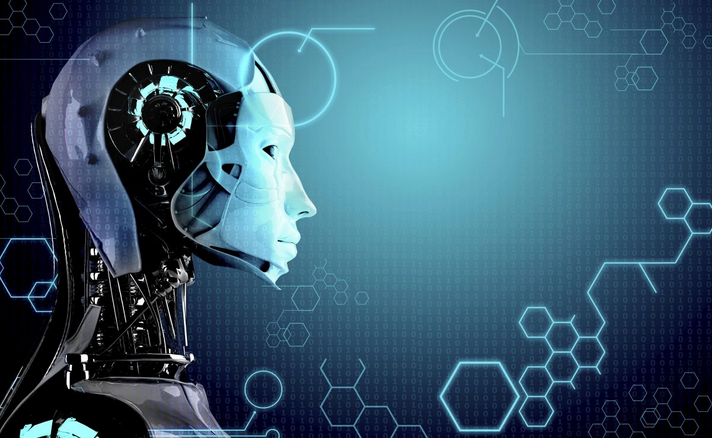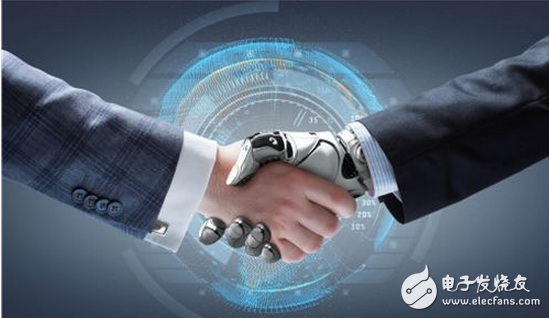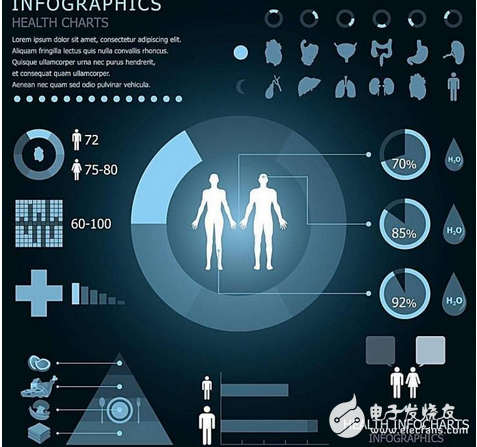Many people think that artificial intelligence and robotics are crises that will pose threats and challenges to our privacy and our work, because many of our work will be transferred to machine-based brains. However, in fact, artificial intelligence is also improving our environment and protecting human beings. Artificial intelligence will also solve many difficult things that we cannot solve by ourselves. From curing diseases to dealing with many threats of violence, AI will make a great contribution to us.
Design new molecules with artificial intelligence

Want to design a new type of solar material, a new anti-cancer drug, or a new compound that can help crops fight viruses? You must first solve two challenges: one is to figure out the chemical structure of this substance, and the other is to figure out which chemical reactions can connect atoms into the desired molecule or combination of molecules.
The traditional method requires a lot of guessing and exploration, which is extremely time-consuming and labor-intensive, and often succeeds after many failures. For example, a synthesis scheme may take hundreds or thousands of steps to be formed, many of which will produce undesirable side reactions or simply not feasible. However, artificial intelligence has now begun to improve the efficiency of both molecular design and synthesis, allowing companies to produce faster, easier, and lower-cost, while reducing chemical waste.
Using artificial intelligence technology, machine learning algorithms can analyze all past experiments that attempt to discover or synthesize new substances. Some of these experiments are successful, but the failed experiments are actually more important. According to the laws discovered from it, machine learning algorithms can predict the structure of new molecules that may be useful and the method of synthesizing these molecules. Of course, these are not things that can be done at the push of a button, but in the field of actual design of drug molecules and materials, artificial intelligence technology is in rapid progress.
For example, an artificial intelligence tool developed by the University of Munster in Germany can repeatedly simulate 12.4 million known single-step chemical reactions, and finally determine a set of multi-step synthesis schemes, and the speed is 30 times faster than humans.
In the pharmaceutical field, a technology called "Generative Machine Learning" based on artificial intelligence is also very exciting. Most pharmaceutical companies store millions of compounds and need to screen them one by one to see if they have the potential to make new drugs. But even with the help of robots and laboratory automation tools, the screening process is very slow and the success rate is low. In addition, there are 1030 possible molecules in theory, and the compounds owned by pharmaceutical companies account for only a small part of them. But with a database describing the chemical structure and properties of known drugs (and candidate drugs), machine learning tools can find new compounds with similar properties but potentially more useful. This ability has greatly accelerated the discovery of new drug lead compounds.
Nearly 100 start-up companies are already experimenting with artificial intelligence technology for new drug research and development, including companies such as Insilico Medicine, Kebotix, and BenevolentAI. Among them, BenevolentAI recently received US$115 million in financing for the development of drugs for motor neuron diseases, Parkinson's syndrome and other intractable diseases through artificial intelligence technology. BenevolentAI applies artificial intelligence to the entire process of drug development, from the discovery of new molecules to drug design, to clinical testing to prove the safety and effectiveness of the drug, with the participation of artificial intelligence.
In the field of materials, companies such as Citrine InformaTIcs have also used methods similar to those of pharmaceutical companies, and have accelerated the innovation process by cooperating with large companies such as BASF and Panasonic. The US government has also expressed support for research in this field. Since 2011, the U.S. government has invested more than $250 million in the Materials Genome Project.
Past experience tells us that new materials and new chemical substances may pose unforeseen risks to health and safety. Fortunately, artificial intelligence should be able to predict these risks, thereby reducing negative consequences. This technology seems to be greatly improving the speed and efficiency of new molecules and new materials on the market, thereby improving medical care, helping agriculture, better protecting resources, and promoting the production and storage of renewable energy.
Artificial intelligence capable of debating and giving instructions

Today's digital assistants sometimes make you suspect that they are humans, but more versatile digital assistants are about to come out. Under the surface, Siri, Alexa, and other similar products use advanced speech recognition software to understand your needs, figure out how to meet your needs, and then read out the answer corresponding to your question in a natural-sounding voice. This type of system must first be "trained" to meet the requirements that a large number of humans may give, and then humans will compile appropriate answers, and then edit the answers into a highly structured data format.
This work is very time-consuming, and the tasks that the trained digital assistant can perform are also very limited. These systems will also "learn" and continuously strengthen the matching of questions and answers, but the degree is limited after all. But despite this, their capabilities are amazing.
The new technology currently being developed can enable the next generation of artificial intelligence systems to absorb and organize unstructured data (such as raw text, video, pictures, voice, e-mail, etc.), and then target someone who has never been trained Topics, automatically generate reliable suggestions or give objections.
The chatbots used by some websites have already demonstrated this ability to answer questions posed in natural language within the range of their trained data. These chat bots basically do not need to receive training for specific problems or requirements. They only need to use a series of pre-configured data combinations and the ability to read relevant background materials in real time to complete the corresponding tasks. However, they still need to receive a certain amount of training in word and intention recognition in order to give highly accurate answers.
In June of this year, IBM released a more advanced technology: a system that enables real-time debates with human experts without prior training on related topics. The system needs to use unstructured data (including the content on Wikipedia, some of which have been edited) to determine the relevance and accuracy of this information, and then organize the information into a reusable resource library, and extract from it that can support Argument for one's own views. It also has to respond to the arguments of human opponents. This system participated in two debates in the demonstration. Many viewers believe that its arguments in one of the debates are more convincing than human opponents.
The software used in this technology not only understands natural language, but also responds to high-level challenges such as judging positive and negative emotions. Its research and development time has exceeded five years, and it is still in the unfinished stage. Nevertheless, the system still prevailed in the debate with human experts. In the next three to five years, there are bound to be countless related applications. These systems will play an important role, such as helping doctors quickly find research data related to a complex case, and then analyze the advantages of a certain treatment plan based on this.
Such intelligent systems can only compile existing knowledge and cannot create new knowledge like scientists or experts. But as machines become more and more intelligent, the possibility of human unemployment is also increasing. Therefore, society needs to provide the next generation of artificial intelligence with the necessary skills to allow them to solve problems that require human intelligence.
Fight cancer and vision loss

Approximately 8.8 million people die of cancer each year worldwide, and nearly 14 million people are diagnosed with some form of cancer. Early detection of cancer can greatly improve the patient's chances of survival and reduce the probability of disease recurrence. AI technology can help doctors identify diseases through image scanning technology. This set of technology can accurately identify tumors and cancers in patients with 96% accuracy, including the diagnosis of breast cancer, lung cancer, rectal cancer, uterine fibroids, ovarian cancer, stomach cancer, and prostate cancer. and many more. It can also help patients with reduced vision to prevent early signs and receive treatment in advance to prevent vision loss.
protect environment

Climate change and environmental pollution are the biggest challenges for mankind. Through cloud computing, big data, and AI technology, we can use machine learning algorithms to monitor energy production and demand in real time. Through storage batteries, energy can be stored, recycled, and released when people need it. This can eliminate non-renewable energy. The impact on our environment. AI technology can also be used to adjust our energy demand in real time. For example, refrigerators can be remotely controlled through AI technology, so the cooling cycle can only be entered when the demand on the grid is low.

16 Port Usb Charger,16 Port Powered Usb Hub,200W High Poer Charger,Multiple Usb Desktop Chargers
shenzhen ns-idae technology co.,ltd , https://www.szbestchargers.com